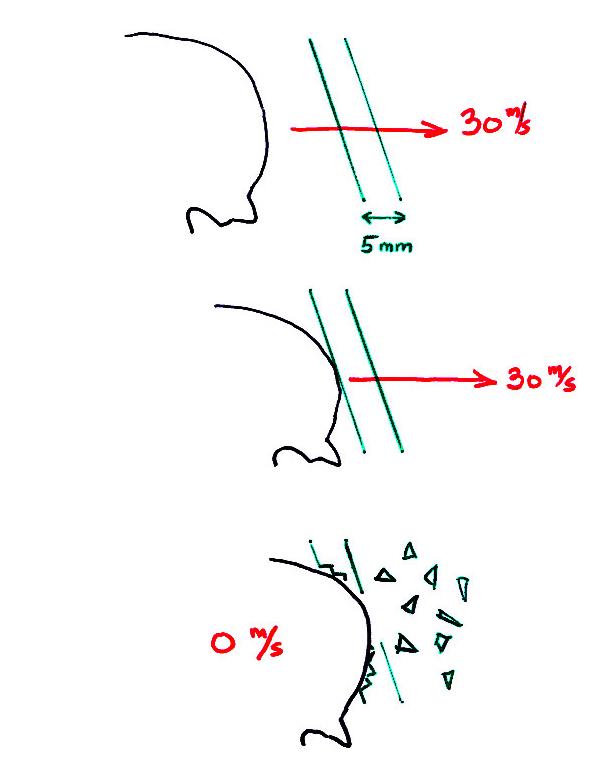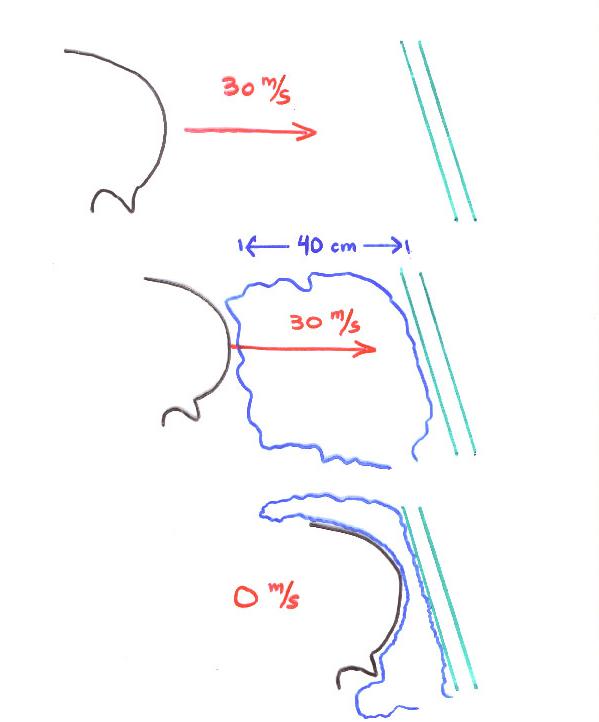
 Copyright © Michael Richmond.
This work is licensed under a Creative Commons License.
Copyright © Michael Richmond.
This work is licensed under a Creative Commons License.
How do airbags help people to survive car crashes?
One way to look at it is to consider the accelerations (or DEcelerations) that a person experiences as his head hits the windshield. Suppose that Fred is driving at about 55 mph, or 30 m/s, when his car runs into a brick wall. The car will come to stop very quickly ... but Fred, who forgot to fasten his seatbelt, will continue to move forward:

Fred's skull hits the windshield, which cracks and bulges
outwards by about its own thickness of 5 mm.
Q: What is the magnitude of the deceleration Fred experiences?
Q: Express this deceleration in "gees". One "gee" equals
9.8 m/s^2.
Very large decelerations (or accelerations) are bad for human beings. How can we prevent them from killing people in car crashes? One way is to give people seat belts ... but many don't like to wear them. Another alternative is to put air bags into cars. Let's see one in action:

Q: What is the magnitude of the deceleration Fred experiences
when his head smashes into the airbag?
Q: Express this deceleration in "gees".
The basic idea is that airbags save lives by giving the head more time and space over which to decelerate.
Continue to think about acceleration as you watch an egg drop from various heights. Is it possible to drop an egg from over 1 meter without breaking it?
I will create an "airbag" for an egg by floating it in a small amount of water inside a bottle. I'll drop the bottle onto the floor from a height H. Please figure out the acceleration experienced by the egg during the collision like so:
Just how much acceleration can an egg endure?
If you want to see an extreme example of acceleration in transportation, see the discussion of Jules Verne's From the Earth to the Moon in this set of lecture notes.
 Copyright © Michael Richmond.
This work is licensed under a Creative Commons License.
Copyright © Michael Richmond.
This work is licensed under a Creative Commons License.